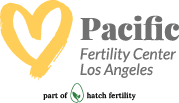For intended parents who have struggled with infertility and unsuccessful in vitro fertilization attempts, the heartache that comes with it is not a comfortable experience and one we’ve seen firsthand.
To increase the chances of conception, fertility doctors have recommended assisted hatching alongside in vitro fertilization (IVF) to intended parents worldwide to increase the chances of successful implantation. Let’s get you up to speed on what assisted hatching is and who benefits from it.
What is assisted hatching (AH)?
Assisted hatching is a lab technique that enables your fertility doctor to implant an embryo more easily in the uterine wall. During this process, a lab specialist makes a small opening in the shell (or zona pellucida) surrounding the embryo.
In some cases, some embryos struggle to break through the shell if it’s too thick, resulting in a failed implantation attempt during the embryo transfer (ET) procedure.
Assisted hatching and IVF implantation rates
It’s widely known that assisted hatching can improve implantation rates for women who have experienced multiple failed pregnancy attempts or frozen embryos. However, there is still a lack of research conducted that can correlate the successes of assisted hatching with live pregnancy or decrease miscarriages.
Good candidates for assisted hatching
To give you a better understanding of the benefits of assisted hatching. We’ve provided a breakdown of who would benefit from this lab technique when used in conjunction with IVF for intended parents considering IVF with our fertility clinic.
Patients with previous IVF failures
Although IVF treatment has higher success rates than most other forms of fertility treatment, some women can still experience a lack of ability to become pregnant. However, women who have gone through two or more unsuccessful IVF cycles can benefit from assisted hatching.
IVF involves nearly every phase of conception, including ovulation, egg retrieval, fertilization, and embryo transfer. The only process that IVF does not directly affect is implantation. If a woman has previously had viable embryos that simply did not implant, adding assisted hatching to IVF treatment can increase the chances of a successful IVF treatment.
Women over the age of 37
The “biological clock” is far more than a myth when it comes to infertility. Both males and females become more prone to infertility issues as they age. Women over the age of 37 are more likely to suffer from fertility problems and have lower success rates for fertility treatments, including IVF.
Because we know that age has such an effect on fertility and fertility treatment success, we are likely to recommend assisted hatching to all IVF patients over 37, even if it’s their first attempt at IVF treatment.
Patients with elevated FSH levels
To increase the chances of a successful IVF treatment, doctors can recommend assisted hatching to any patient with elevated FSH levels. FSH is the follicle-stimulating hormone that helps regulate the menstrual cycle and egg’ stimulation in the ovaries. Women with high FSH levels are known to produce thicker zona pellucida shells (the outer layer of proteins surrounding an embryo).
The thicker the embryo’s outer layer is, the more difficult it will be for the embryo to break through the lining and implant along the uterine wall. If the lining is unusually thick, the embryo may be unable to implant at all.
Learn more about your selection of fertility services
At Pacific Fertility Center Los Angeles, our doctors offer a wide range of fertility treatments to help intended parent’s all over the world to overcome infertility. Our doctors have performed over 10,000 IVF procedures and have taught at major medical schools, have won numerous awards, and have lent their expertise to the Discovery Channel and NPR. Get in touch to learn more about what we can do for you at any time and day of the week.
Note: This is not intended to be a substitute for professional medical advice, diagnosis or treatment. Information provided is for general educational purposes only and is subject to change without notice. Speak to your doctor directly with any questions you may have regarding a medical condition. Any information contained herein does not replace any care plan as determined by a physician.
You May Also Like
These Stories on In-Vitro Fertilization


.png)
